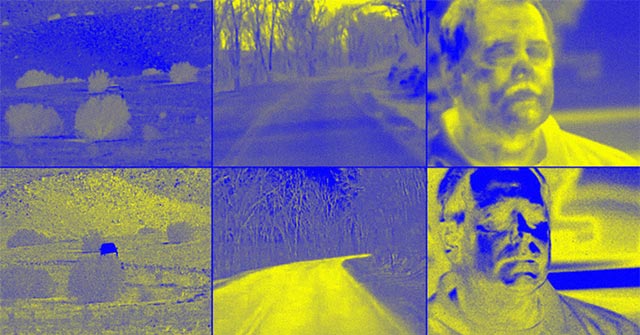New face recognition technology can identify objects up to 1,000 meters away
Thanks to the great advances in the field of artificial intelligence in general and machine learning in particular in recent years, facial recognition technology is becoming much more powerful. Advanced facial recognition systems today can easily select each specific face in a busy crowd with impressive accuracy.
But accuracy alone is not enough, identification distance is also a factor to be focused on improving. The U.S. military has just been transferred technology and is testing a handheld facial recognition device that can accurately identify a person's identity at distances up to 1,000 meters, equivalent to the length of 10 soccer fields.
This state-of-the-art facial recognition device is the result of a project called 'Advanced Tactical Facial Recognition', funded by the US military and started to be deployed in 2016 by the technology firm Secure Planet. based in Arlington, Virginia. On its website, the company claims that its mobile biometric identification and verification system can provide the necessary protection to not only soldiers but also citizens, helping to keep it safe. remote locations in high-risk environments like on battlefields or riot locations. At the same time, it is emphasized that this product is developed 100% for legitimate security purposes.

Secure Planet did not disclose exactly how this handheld facial recognition device works. Even with the most advanced AI technologies, there is still a big challenge that experts have to solve, which is how to reduce noise when observing an object moving from a distance. thus down to an identifiable AI level. At distances up to 1km, even air turbulence can cause image distortion problems in an effect similar to heat radiation, creating a 'shimmering' illusion as we often see it. seen in hot days. To solve this problem, it is likely that experts have resorted to a separate neural network capable of rearranging images distorted by environmental factors, thereby obtaining facial data. feasible for identification purposes.
In addition, it is not clear exactly how this technology will be implemented. Although originally designed for handheld use, it can also be fitted on unmanned aircraft, even shared with law enforcement agencies.
Experts are working on it, but experts say it will be a long time before the technology is truly eligible for military use.
You should read it
- It's time to face the 'reverse side' of face recognition technology
- Face recognition technology is still receiving masks
- Turning his back and covering his face still didn't escape the technology of identifying Chinese gait with an accurate rate of 94%.
- Programming a face detection tool in Python
- Face recognition features of Chinese technology companies will dominate the world in 2019
- The Shenzhen city subway system will allow payment through face recognition feature
- Facebook stopped automatic face recognition because of a lawsuit
- Smartphone unlock feature with face recognition system makes owner lost 1,800USD while sleeping
- Windows Hello Face facial recognition technology on Windows 10
- 3D face recognition on Mate 20 Pro is easily fooled by two people just the same about hair and beard
- Order food with facial recognition technology, not much to say
- The universal face can 'crack' many identification systems
May be interested

The new 3D printing technique can create delicate, small, soft objects in seconds

This device can turn you into 'Spider-Man'

Toshiba's algorithm helps normal computers calculate faster than supercomputers

China successfully developed 'handheld' quantum satellite communications equipment

This is the first watch to integrate two in-depth health monitoring tools

Apple is quietly developing virtual speaker technology that can simulate sound from any location






 It's time to face the 'reverse side' of face recognition technology
It's time to face the 'reverse side' of face recognition technology Turning his back and covering his face still didn't escape the technology of identifying Chinese gait with an accurate rate of 94%.
Turning his back and covering his face still didn't escape the technology of identifying Chinese gait with an accurate rate of 94%. Face recognition technology is still receiving masks
Face recognition technology is still receiving masks Windows Hello Face facial recognition technology on Windows 10
Windows Hello Face facial recognition technology on Windows 10 The universal face can 'crack' many identification systems
The universal face can 'crack' many identification systems AI technology and face recognition are used to build shelters for stray cats
AI technology and face recognition are used to build shelters for stray cats